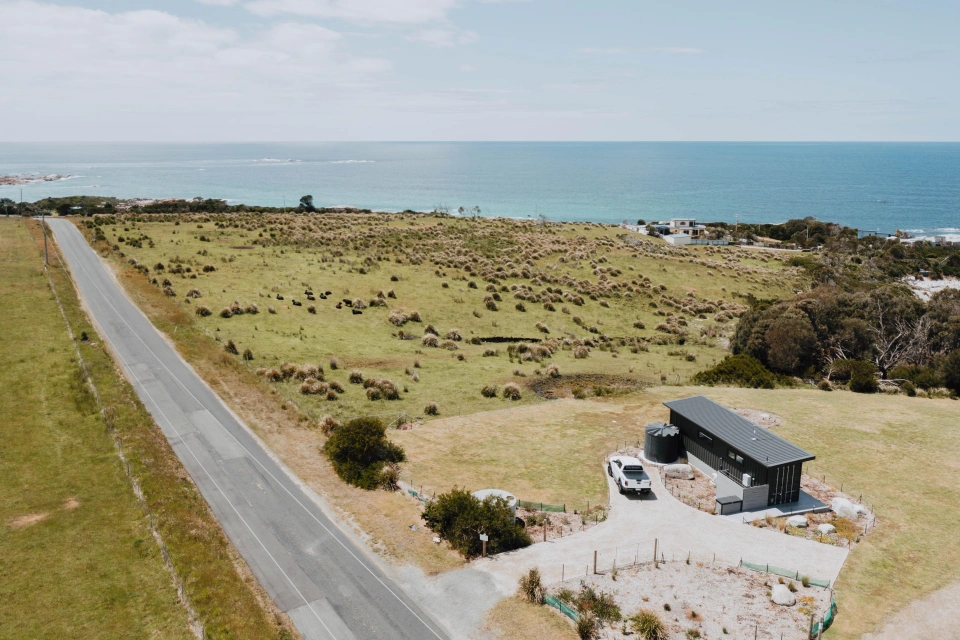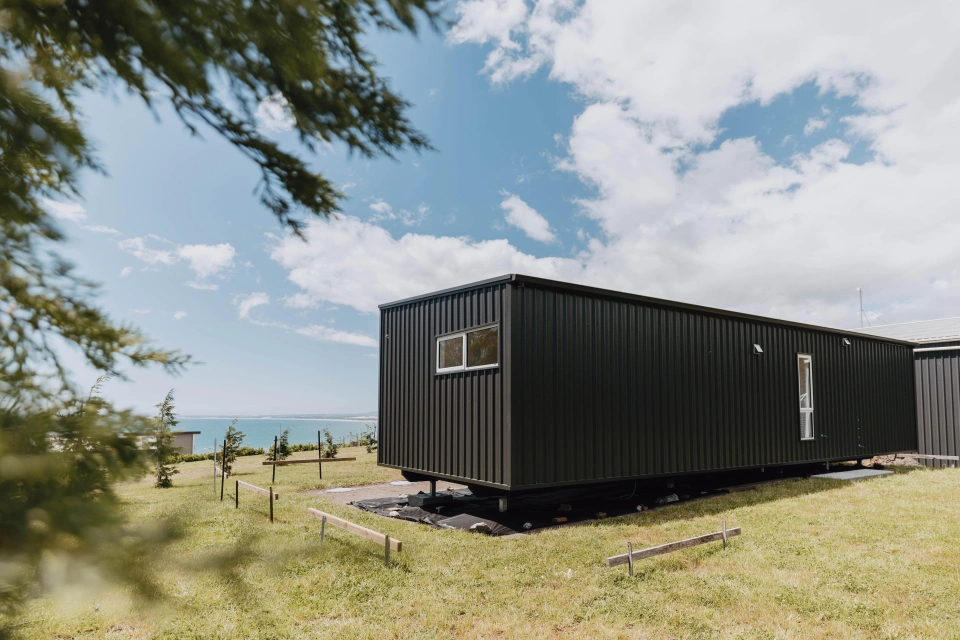Navigation
You’ve chosen a Tiny Home, so let’s talk land
28th May 2025
A Tiny Home doesn't mean downsizing.
It's a conscious choice to live more simply, more sustainably, and often, more freely. But while the home itself might be tiny, the considerations surrounding where to place it are anything but. Choosing the right block of land can make all the difference, not just in terms of cost, but in how smooth your journey will be from delivery to move-in day.
At Tiny Homes Tasmania, we build and deliver homes all over Tasmania (and Australia). Whether you're setting up in Launceston, the East Coast, the Huon Valley or somewhere interstate, we work with your local council and help you navigate the process to get everything right from the start.
Keep reading to find out what you need to know before you buy a block of land for your Tiny Home.

Understand what's required to live legally onsite
Once your home is built, it needs to reach what's called "practical completion" before you can legally live in it. This means the home is not just delivered but fully installed and connected to services. To get to this point, we'll need to go through a development application process with your local council. This includes application fees, design and building surveyor fees, and a range of reports depending on the site and its characteristics.
For most sites, a geotechnical report will be required to assess soil conditions. Things to consider when it comes to your block of land include:
- Whether it's in a bushfire-prone area.
- If it's in an off-grid location, is there connection to sewer networks? If not, we'll have to install a wastewater system onsite.
Also, if there are planning overlays on the site, further reports may be needed. Your local council can provide advice on any applicable overlays before you purchase the block, or you can check yourself using the PlanBuild Tasmania website.
It might sound like a lot, but don't let it overwhelm you! The more consideration you give to choosing your parcel of land, the smoother the process will be.
Delivery and access considerations
Tiny Homes are delivered on either a side-loading truck (for container homes) or a flat tray truck (for Bigger Tiny Homes). In some cases, particularly for container homes, the truck can place the home directly onto its footings if there is flat, accessible land with enough room to manoeuvre. This can save you the cost of hiring a crane. For Bigger Tiny Homes or sites with less access, a crane will always be required to lift the home into position.
Before purchasing a block, it's important to consider whether the site has adequate access. Can a semi-trailer with a 40-foot container get onto the property without trouble? Are there low-hanging power lines or trees on the road in or on the site itself? Is there space for a crane to set up and operate safely onsite at the same time as the truck?
We offer onsite consults for a small fee to help answer these questions and ensure your block is suitable for delivery and installation. This can help prevent expensive surprises down the track!

Choosing the right block
When it comes to choosing your piece of land, the more prepared your site is, the less you'll need to spend on setup and services. The ideal block is flat, has existing access to key services (power, water, stormwater, sewer, NBN), and is zoned 'General Residential' or 'Low-Density Residential'. 'Rural' and 'Agricultural' zones can be more challenging and may require additional planning justification, but don't let that scare you.
Tip: It's also important to understand where these services are located in relation to where you want to position the home on your block. If services are located far from your build site or are uphill, this can increase costs. In some cases, you may need to pump sewer or stormwater uphill, which can add to your infrastructure budget.
Be mindful of any easements on the property. These are areas with underground services or infrastructure that you legally cannot build over. Rocky ground can also present challenges, making footing installation and plumbing more complex and, therefore, costly.
Finally – don't forget to check your local council's standard boundary setbacks. These usually require a minimum of 1.5 metres from the side boundaries and 4 metres from the rear. If your block is on the smaller side, make sure you've allowed for the home, its landing or deck, and these mandatory clearances.
We're here to help, no matter where you're building
Whether you're planning to build in Tasmania or elsewhere in Australia, we're here to make the process as smooth as possible. We've worked with councils across the country and understand the various challenges that can come up. If you're unsure whether your site is suitable or what the full scope of costs may be, just ask. We're happy to guide you through it.
Getting the land right is just as important as choosing the right home. By understanding the full picture early, you can plan better, stay on budget, and move into your Tiny Home with confidence.
